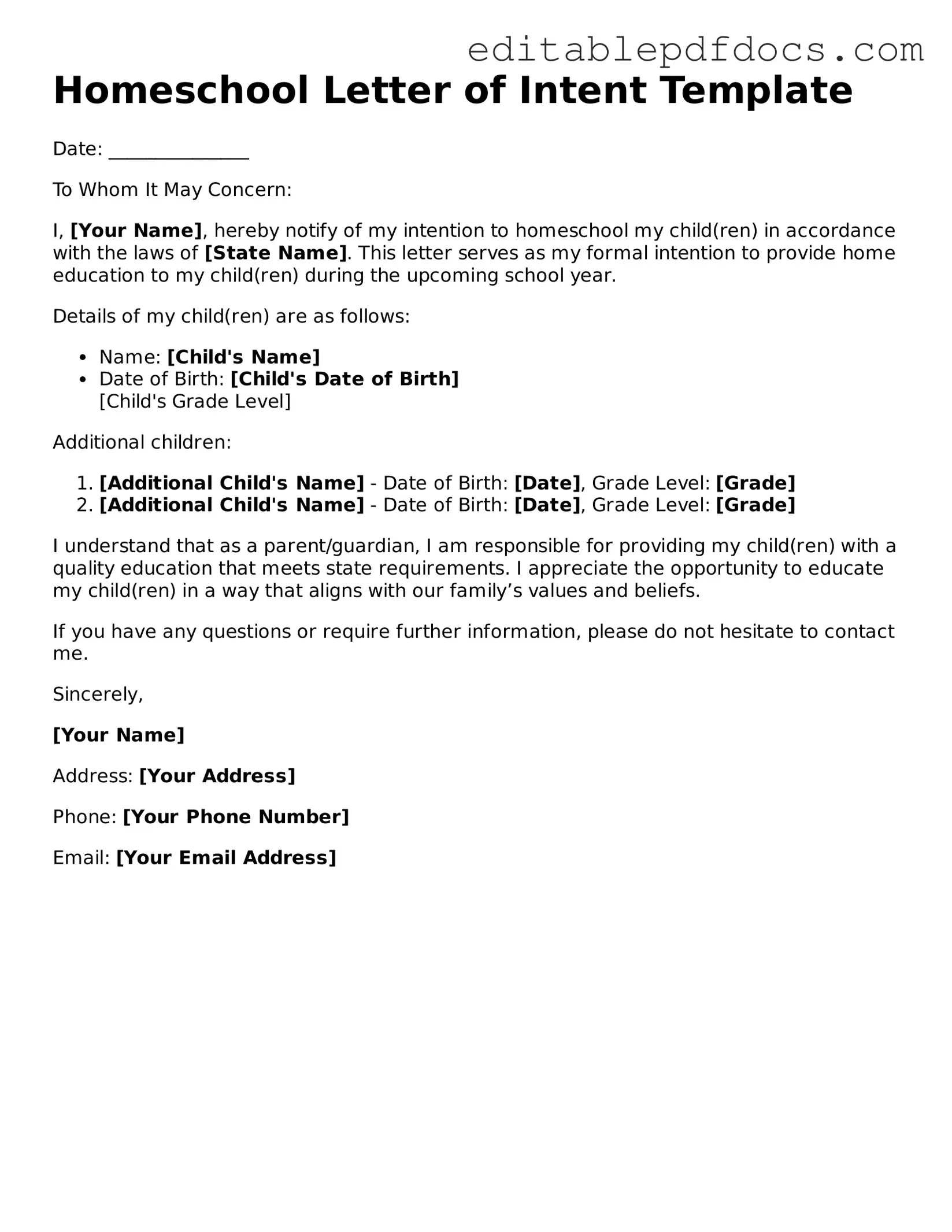For families considering homeschooling, the Homeschool Letter of Intent form serves as a crucial first step in the educational journey. This document not only formalizes the decision to educate a child at home but also ensures compliance with state regulations. Typically, it includes essential information such as the names and ages of the children being homeschooled, the address of the family, and a declaration of intent to provide an educational program. Some states may require additional details, such as the curriculum to be used or the educational philosophy guiding the homeschooling approach. Submitting this form is often a prerequisite for families to legally homeschool, making it vital to understand the specific requirements of their state. Timeliness is also important; many states have deadlines for submission that must be adhered to in order to avoid potential legal complications. Navigating this process can feel overwhelming, but being informed and prepared can help families take this significant step with confidence.
